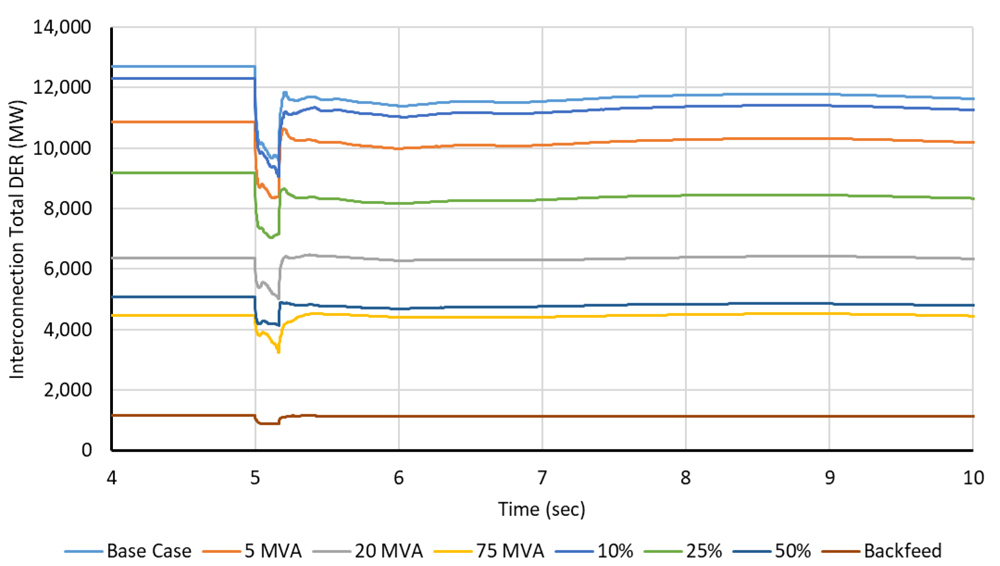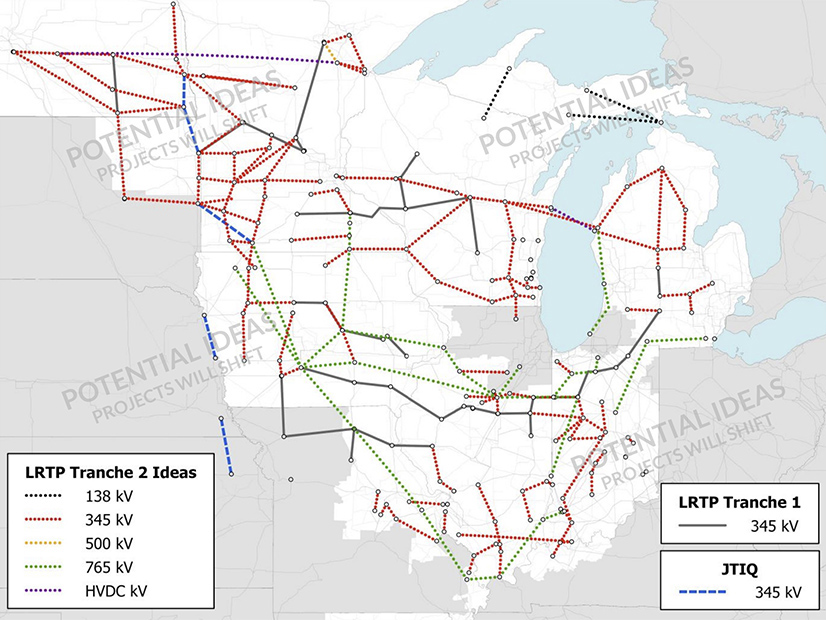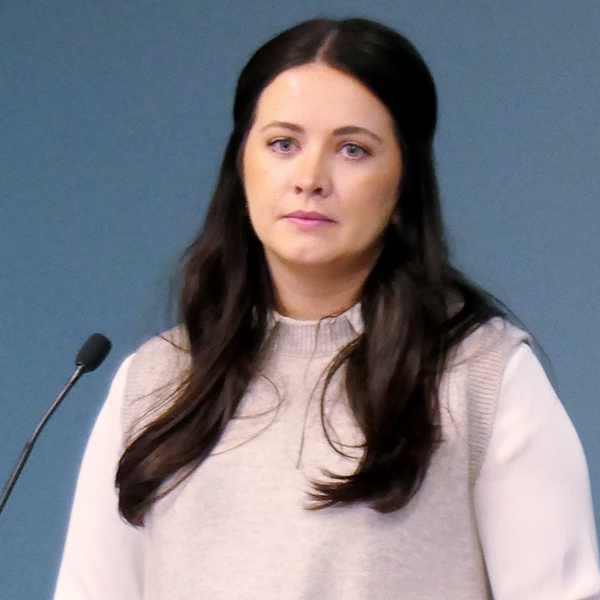While Russia’s war on Ukraine has triggered a global “dash to natural gas” to replace lost Russian supplies, it has also created a bull market for electric heat pumps, with sales in Europe up 35% in 2021 and Poland doubling sales in the first half of 2022, according to new reports on global energy efficiency from the International Energy Agency (IEA).
“Energy efficiency is now at the center of policy agendas [as] governments and citizens around the world urgently look to save energy, secure supply and reduce energy bills,” said Nicholas Howarth, IEA energy policy analyst and lead author of the Energy Efficiency 2022 report, released on Friday. “We’re seeing strong signs of governments turning to efficiency, as they did in the 1970s, as it is the best way to simultaneously meet energy, affordability, security and climate goals.”
The central question, Howarth said at a media briefing on the report Thursday, is whether 2022 will “be a turning point for energy efficiency” to take a leading role in the global response to the current energy and climate crises.
The signs are encouraging, according to the IEA report. First, energy intensity — the amount of energy needed to produce one unit of gross domestic product — is expected to rise 2% in 2022, a four-fold increase over the previous two years, when the COVID-19 pandemic slowed both energy demand and efficiency measures, Howarth said.
In addition, global spending on energy efficiency could hit $560 billion this year, a new record, according to the report. Efficiency also represents about two-thirds of all clean energy and economic recovery spending since 2020. The report calls out the Inflation Reduction Act in the U.S., Europe’s REPowerEU Plan and Japan’s Green Transformation Initiative as examples of national efforts that are “driving this progress on efficiency.”
At an IEA conference on energy efficiency in Denmark in June, 26 countries, including the U.S., issued a joint statement underlining the importance of efficiency and calling for stronger action on national initiatives.
The report also points to the electrification of transportation and heating, which, it says, have reached a tipping point. “One in every eight cars sold globally is now electric, while almost 3 million heat pumps were sold in 2022 in Europe alone as they become the preferred heating option,” the report says.
Public campaigns are raising awareness of energy-saving technologies, which, in turn, are raising consumer perceptions of their value, the report says. “While energy cost-of-living pressures have risen considerably, efficiency actions implemented over the last 20 years are now saving consumers in IEA countries $680 billion off their energy bills this year at current prices,” the report says.
IEA has 31 member countries, including the U.S., and 11 “association” countries, which include China and Ukraine.
The savings for individual homeowners can be significant. In the U.K., for example, efficient homes can cut their energy bills by 40%, Howarth said. “[U.K.] families with the least efficient homes will be paying up to three times more for the same level of comfort … and the same story is true in every country.”
Switching to an electric vehicle provides similar savings: 40% over the most efficient gas-powered car, the report says.
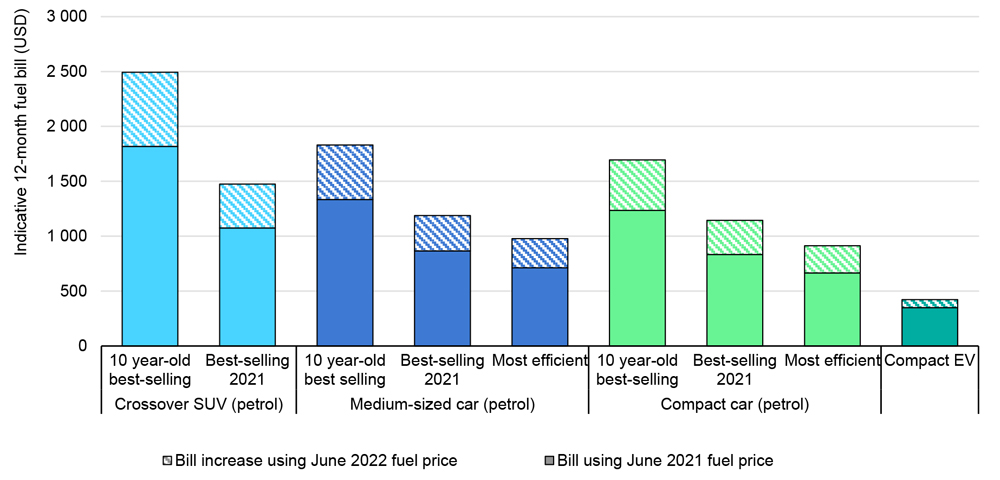 Fuel bills for different personal vehicle types in Europe, June 2021-2022. Gas powered vehicles have become more efficient, but electric vehicles are still more efficient and less expensive to run. | IEA
Fuel bills for different personal vehicle types in Europe, June 2021-2022. Gas powered vehicles have become more efficient, but electric vehicles are still more efficient and less expensive to run. | IEA
In a separate report on heat pumps released Wednesday, the IEA projected that if all countries fulfilled their current pledges to cut greenhouse gas emissions, the global capacity for heat pumps could jump from 1,000 GW in 2021 to 2,600 GW by 2030, cutting fossil fuel use for heating in buildings almost in half.
The Energy Efficiency report also noted that a growing number of countries and “subnational governments” — cities, states and provinces — are banning or phasing out natural gas in new construction. Germany is planning a ban on fossil fuel heating in new construction beginning in 2024, while France is banning new gas connections in 2023. The Netherlands will require heat pumps in buildings beginning in 2026.
The issue has become a political flashpoint in the U.S., with 20 states prohibiting bans on natural gas hookups, while a growing number of cities and counties have passed bans on gas hookups in new construction. Montgomery County, Md., became the latest jurisdiction to take action, with the County Council on Tuesday passing legislation that requires all new construction to be all electric, with new regulations to be issued by the end of 2026 and 2027. (See Montgomery County, Md., Passes Building Electrification Law.)
Waiting for IRA Rebates
Energy conservation efforts in the U.S. and Europe date back to the OPEC oil embargo of 1973-1974. In the U.S., the embargo is associated with long lines at gas stations nationwide, a 55-mph speed limit and the first fuel economy standards. IEA itself grew out of international efforts to secure oil supplies at that time.
Steven Nadel, executive director of the American Council for an Energy-Efficient Economy (ACEEE), agrees with IEA framing of the war in Ukraine as a major factor for a ramp-up of energy-efficiency measures globally.
The war is “also affecting the U.S. because we are exporting a lot more LNG to Europe. Our prices have gone up quite a bit, and that’s been a major contributor to inflation but also a major contributor to consumers’ interest in trying to use efficiency,” he said.
The most recent Short-Term Energy Outlook from the U.S. Energy Information Administration projects that homes using heating oil for space heating will be spending 45% more than last year.
“When you have these types of prices — yes, consumers will care a lot more about efficiency,” he said.
The IRA has both tax credits and a range of rebates for energy efficiency home improvements, but Nadel does not expect the law to have a major impact this winter.
“All the IRA programs, they’ve passed, but the money’s not yet reaching the states, let alone consumers,” he said. The Department of Energy, Internal Revenue Service and other agencies still have to translate the law’s “fairly vague pronouncements” into regulations and guidelines. But, he said, the $3.5 billion in funds for low-income home weatherization in the Infrastructure Investment and Jobs Act is starting to flow.
“The demand for this program is greater than the supply,” he said. “This money will help, but it will not meet all of the demand.”
ACEEE on Thursday launched a new initiative, Residential Retrofits for Energy Equity, with $2.5 million from the Rockefeller Foundation and $250,000 each from JPMorgan Chase and the Wells Fargo Foundation. The initiative aims to “jump-start” energy-efficient upgrades for affordable housing.
US Energy Inflation is Low
Increased spending and action on energy efficiency also face major hurdles, first and foremost, the $550 billion that IEA estimates governments worldwide have allocated thus far to shield consumers from high energy prices. In developing countries, government support for consumers ”now exceeds that provided for clean energy investments since 2020,” Horwath said.
“Energy-related cost-of-living pressures are a major concern this year, driven by high fossil fuel prices,” Howarth said. “Increased energy costs being the single biggest contributor to inflation experienced this year in most countries, pushing up the cost of living for families worldwide and setting back progress on energy access in emerging and developing countries.”
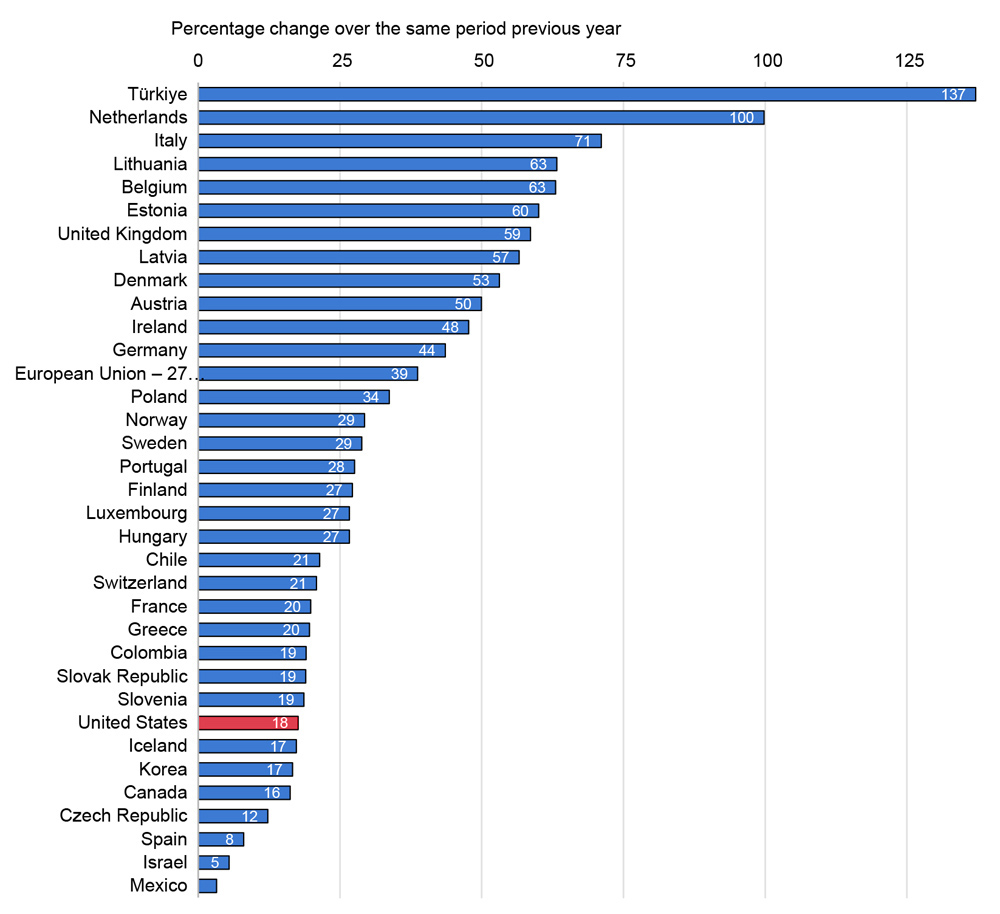 Year-on-year change in energy price inflation, October 2022. The U.S. has one of the lower inflation rates, while Mexico is at the bottom of the list. | IEA
Year-on-year change in energy price inflation, October 2022. The U.S. has one of the lower inflation rates, while Mexico is at the bottom of the list. | IEA
The U.S. is one of a small number of nations with relatively low energy cost inflation, according to the Energy Efficiency report: about 18% compared to some European countries. The Netherlands has seen a 100% jump in energy costs, while in the U.K., energy prices are up 59% year over year.
IEA cautions that short-term consumer support should “not weaken incentives to reduce energy waste or slow the switch to low-carbon supply. The least efficient interventions are those that lower market prices for energy through direct fossil fuel consumption subsidies, indiscriminately applied to all customers. Such subsidies risk removing the incentives to improve efficiency and disproportionately benefit wealthier consumers who are large energy consumers.”
The heat pump report looks at more practical barriers: the still-high upfront costs of some efficiency technologies and a shortage of qualified installers. According to the report, financial incentives for heat pumps are now available in 30 countries, “covering more than 70% of today’s heating demand.” The IRA offers rebates of $2,000 to $8,000 for installing a heat pump, depending on household income.
IEA sees the global demand for full-time heat pump installers quadrupling by 2030 and suggests “incorporating heat pumps into existing certifications for heating technicians, plumbers and electric engineers, who have similar skills,” and offering financial incentives to “attract new workers to specialized training programs.”

